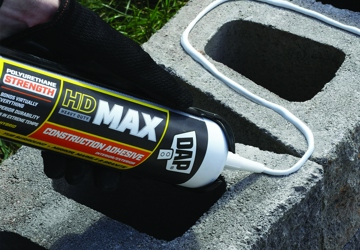

When it comes to addressing fastening requirements during planning, spring models enable versatility when designing anchorages in concrete. The Finite Element Method (FEM) module in the C-FIX software of the fischer FiXperience Online suite makes it easier to plan fastening solutions for entire projects and individual applications in a targeted manner, free of charge.
fischer launched the online version of the C-FIX software of its fischer FiXperience suite in 2020 to design steel and bonded anchors in concrete. The online platform provides quick and user-friendly calculations, even from mobile end devices such as tablets, meaning there is no need to download, install and repeatedly update the software. FiXperience design software is also available as an online browser version containing the C-FIX Online module, as well as a desktop version with specialist application modules for seven different trades.
The design software is valid worldwide in terms of current European application documents (ETA) and corresponding standards, in addition to further applicable national and international design standards. Any upgrades that become necessary over the course of the changing standard landscape are free of charge to customers – including the upcoming update to the DIN EN 1992-4 standard, first published in 2019, which regulates the design of fastenings in concrete. The updates to EN-1992-4 will include details on determining sufficiently rigid base plates in addition to further considerations of linear and non-linear force distribution, guidelines on sufficient fixture rigidity as well as additional notes on anchor stiffness.
To enable access to designs according to the updated DIN EN 1992-4 standard, fischer has unlocked access to the Finite Element Method, which was previously offered under a license model, to all customers free of charge. The fischer FEM module was launched as a premium feature of the fischer FiXperience C-FIX online module in 2022 to design steel and bonded anchors in concrete. Since then, the tool has helped planners, structural engineers and construction workers to successfully use linear spring models in combination with the FEM to save time, assess the stiffness of the base plate and calculate anchor forces.
With the FEM module, the fixing specialist offers its customers the highest level of design security. Unlike other processes, using linear spring models in combination with the FE method allows the behaviour of the entire fastening point to be shown. This design method considers the stiffness of the anchor and base plate while taking into account the realistic force distribution on the individual anchors of a group fastening.
The FEM module can be activated under various design conditions. In order to optimise the stiffness of the base plate, the software can calculate the necessary minimum thickness of the base plate with one click and increase the base plate thickness, make the attached profile larger, position reinforcements or select a different anchor system for improved force distribution. Multiple loading cases can be defined and calculated. The software displays the deformation, tension and anchor forces for standard or selected loading cases and provides a realistic presentation. It can also provide verification of the steel stress, weld joints, bearing stress and concrete compressive stress of the entire base point.

Becca is the latest member to join our team and is eager to get stuck into the world of fasteners. She brings an enthusiastic and fresh outlook on what we do editorially and will be leading our social media activity – including sourcing material, editing articles and posting online.





